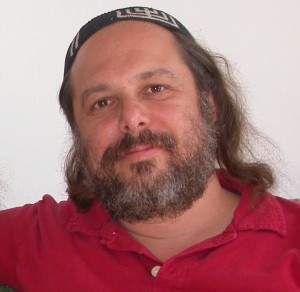This week we complete a topic we started last week: Tzaarat. it is a spiritual affliction with physical components and its symptoms can appear on human flesh, leather, wool, linen, and even on the walls of a house. Last week, the Torah talked about how to recognize it on a person and on a person’s clothing.
This week the Torah talks about how a person heals from Tzaarat and also how to recognize it in a house and how to deal with it when it infects a house.
And just like last week’s parsha (weekly Torah portion) starts off in left field by talking about purification after childbirth, this week’s parsha ends in right field talking about impurity from various emissions of the flesh, sperm, and menstruation.
The overall flow of the parsha begs the question of why the jump in topic. I am not covering that today because to do justice on this question, I need to wait for a year where this week’s parsha and last week’s parsha are joined together as a double parsha (this happens during a Jewish year cycle that is not a leap year).
Instead I want to share a teaching I heard this week about the parsha.
But before I do, I think I should mention that the parsha is called Metzora which is a noun and means, “One who has the Tzaarat affliction.”
Now that I have gotten that out of the way, let me share what I heard from R. Boris.
Each week, R. Boris (and sometimes me when R. Boris can’t lead 🙂 ) leads a Torah discussion group at a local pizza parlor. We were reading about Tzaarat afflicting a house, specifically verses 14:44-45 in the book of Vayakra (Leviticus).
The verses read: The Cohen (priest) will come and look and behold, the plague (of Tzaarat) has spread in THE HOUSE; it is malignant Tzaarat in THE HOUSE, it is impure. He shall demolish THE HOUSE and its stones and its woodwork and all the dust of THE HOUSE, and he will cause it to be taken to outside the city to an impure place.”
I emphasized 2 words here: THE HOUSE. R. Boris pointed out that Jewish tradition often refers to the temple as THE HOUSE of god. Therefore, he concludes that these verses are not talking about any old house; rather they are referring to the temple.
Before any of us had a chance to challenge this assumption, R. Boris continued. He pointed out that the sages tell us that the cause of Tzaarat was gossip and not only can gossip lead to baseless hatred, but it is often the result of baseless hatred. Furthermore, our sages also tell us that the 2nd temple was destroyed by baseless hatred.
R. Boris further notes that part of the healing process of a person with Tzaarat was to go outside of the camp.
He then said that we, the people, are the stones of THE HOUSE because we are what make the temple what it was and could be. Without the Jews there is not temple. Without the stones, there is no house.
So, the removal of the stones is an allusion to the diaspora that we are currently in. It is us being removed to outside the camp, so to speak, because of the baseless hatred we have that led to the destruction of the temple.
I, and everyone else at the Torah discussion this past Wednesday found this a very moving teaching.
One thing I would like to add is what we can do about this. Let me explain.
One thing our sages tell us is that the purpose of the person with Tzaarat to be alone and outside the camp is so that person will have a chance to think about how their words can affect and hurt others… and also help and heal others. Once they have made this realization, they can fully heal and be allowed back into camp.
Maybe we can also learn this lesson and apply it today. What would happen if we stopped hating each other, if we stopped gossiping and slandering each other?
Might it not lead to us starting to work together? And just as a house is made of all the stones working together and supporting each other, could our working together bring peace in the world and lead to the rebuilding of our holy temple, THE HOUSE, and a more tangible expression of the Divine Creator in our lives?
Are you willing to help me test this idea? Are you willing to support instead of hate and gossip?
I bless all of us that we may live to see the results of the whole world trying this little test.
If you care to read what I wrote about this parsha last year, click here.
About the Author
 Shmuel Shalom Cohen spent 10 years studying Torah in Jerusalem. Six years ago, he started Conscious Torah to help Jews connect to their tradition in ways they didn’t think possible. Shmuel also started, and is the executive directory of Jewish Events Willamette-valley, a non-profit whose mission is to build Jewish community, pride, and learning. In his free time, Shmuel likes walks in nature, playing music, writing poetry, and time with good friends.
Shmuel Shalom Cohen spent 10 years studying Torah in Jerusalem. Six years ago, he started Conscious Torah to help Jews connect to their tradition in ways they didn’t think possible. Shmuel also started, and is the executive directory of Jewish Events Willamette-valley, a non-profit whose mission is to build Jewish community, pride, and learning. In his free time, Shmuel likes walks in nature, playing music, writing poetry, and time with good friends.